使用sysbench对MySQL进行测试
Updated:
Contents
为什么要测试,测什么东西?
测试的种类非常多,测试的目的也非常多,我这里主要的目的就两个
测试MySQL的极限IO
对比不同版本MySQL,不同参数, 不同硬件,不同系统对MySQL的性能影响
为什么选择sysbench
- 因为MySQL官方的测试就是用sysbench哦
- 尽量选择最新版本的sysbench哦,大于0.4版本的sysbench有实时显示功能
如何下载sysbench
http://github.com/akopytov/sysbench
文档在哪里
http://github.com/akopytov/sysbench
如何安装
|
|
介绍sysbench的核心用法
- 它可以用来测试很多东西,测试io,cpu,mem,mysql,oracle,pg等等。
- 这里主要介绍我关心的两个,IO & MySQL
- 以下前半部分是0.4版本的用法,0.4以上的版本用法不一样,会注明。
一、通用语法
|
|
- command
|
|
- common-options
只介绍常用的选项
| 选项 | 描述 | 默认值 |
|---|---|---|
| —num-threads | 多少个线程 | 1 |
| —max-requests | 多少个请求,0意味着无限制 | 1000 |
| —max-time | 测试多长时间,0意味着无限制 | 0 |
| —test | 测试什么模块 | 必须要求 |
| —report-interval | 阶段性的汇报测试统计信息,0.4以上版本新增 |
- —test=fileio 模块的选项
提前注明:—file-test-mode
|
|
- test option for fileio
| 选项 | 描述 | 默认值 |
|---|---|---|
| —file-num | 创建文件的数量 | 128 |
| —file-block-size | IO操作的大小 | 16k |
| —file-total-size | 所有文件的总大小 | 2G |
| —file-test-mode | seqwr,seqrewr, seqrd, rndrd, rndwr, rndwr(上面已经介绍) | 必须 |
| —file-io-mode | i/O 模式,sync, async, fastmmap, slowmmap | sync |
| —file-extra-flags | 以额外的标记(O_SYNC,O_DSYNC,O_DIRECT)打开 | - |
| —file-fsync-freq | 多少请求后使用fsync | 100 |
| —file-fsync-all | 每次写IO都必须fsync | no |
| —file-fsync-mode | 用什么样的模式来同步文件fsync, fdatasync (see above) | fsync |
| —file-rw-ratio | 随机读写请求的比例 | 1.5 |
举例:
|
|
OLTP-MySQL
此模式用于测试真实数据库性能。在prepare阶段创建表,sbtest默认
|
|
在run阶段
- simple模式
|
|
- Point queries
|
|
- Range queries:
|
|
- Range SUM() queries
|
|
- Range ORDER BY queries
|
|
- Range DISTINCT queries
|
|
- UPDATEs on index column
|
|
- UPDATEs on non-index column:
|
|
- DELETE queries
|
|
- INSERT queries
|
|
- oltp test模式通用参数
| 选项 | 描述 | 默认值 |
|---|---|---|
| —oltp-table-name | 表的名字 | sbtest |
| —oltp-table-size | 表的行数 | 10000 |
| —oltp-tables-count | 表的个数 | 1 |
| —oltp-dist-type | 热点数据分布{uniform(均匀分布),Gaussian(高斯分布),special(空间分布)}。默认是special | special |
| —oltp-dist-pct | special:热点数据产生的比例 | 1 |
| —oltp-dist-res | special:热点数据的访问频率 | 75 |
| —oltp-test-mode | simple,complex(以上介绍) | complex |
| —oltp-read-only | 只有select 请求 | off |
| —oltp-skip-trx | 不用事务 | off |
| —oltp-point-selects | 一个事务中简单select查询数量 | 10 |
| —oltp-simple-ranges | 一个事务中简单range查询的数量 | 1 |
| —oltp-sum-ranges | sum range的数量 | 1 |
| —oltp-order=ranges | order range的数量 | 1 |
- mysql test 参数
|
|
以上0.4版本的语法介绍完毕。
接下来是大于0.4版本的新语法,尤其是—test=oltp模块
用—test=xx.lua (完整路径来传递)来代替
FileIO实战
磁盘:S3610 * 6 raid10, 内存128G
测试出相关场景下的极限IOPS
- 随机读写(3:2 oltp场景)
|
|
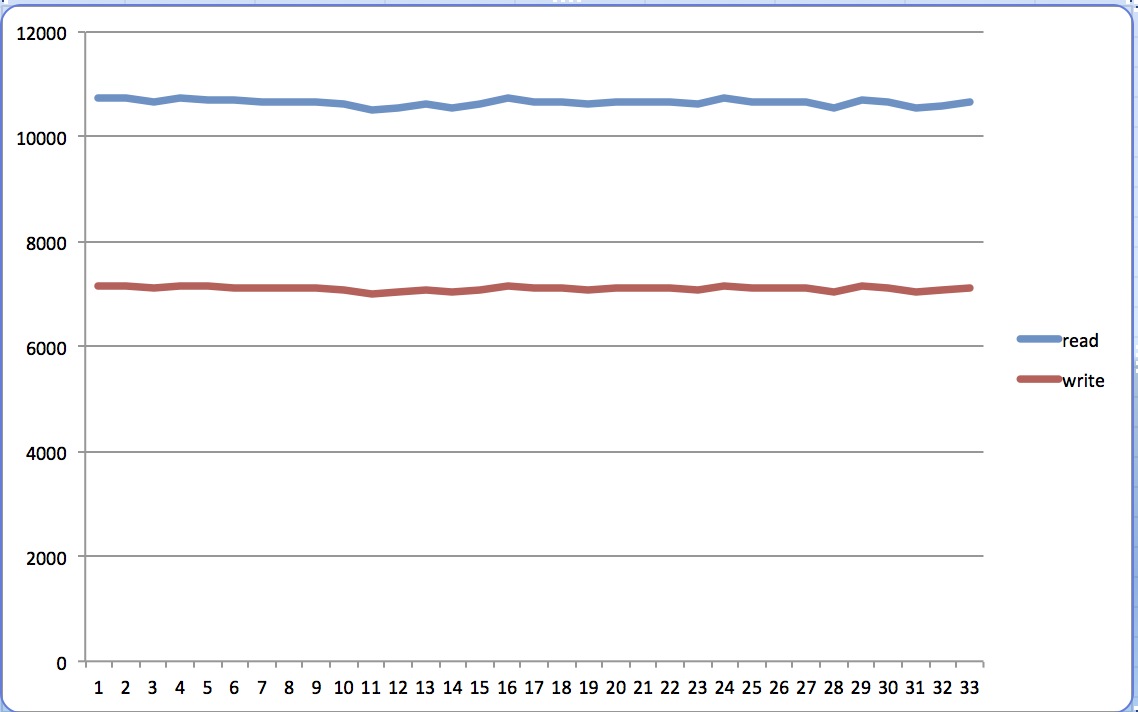
- 随机读写(5:1 oltp场景)
|
|
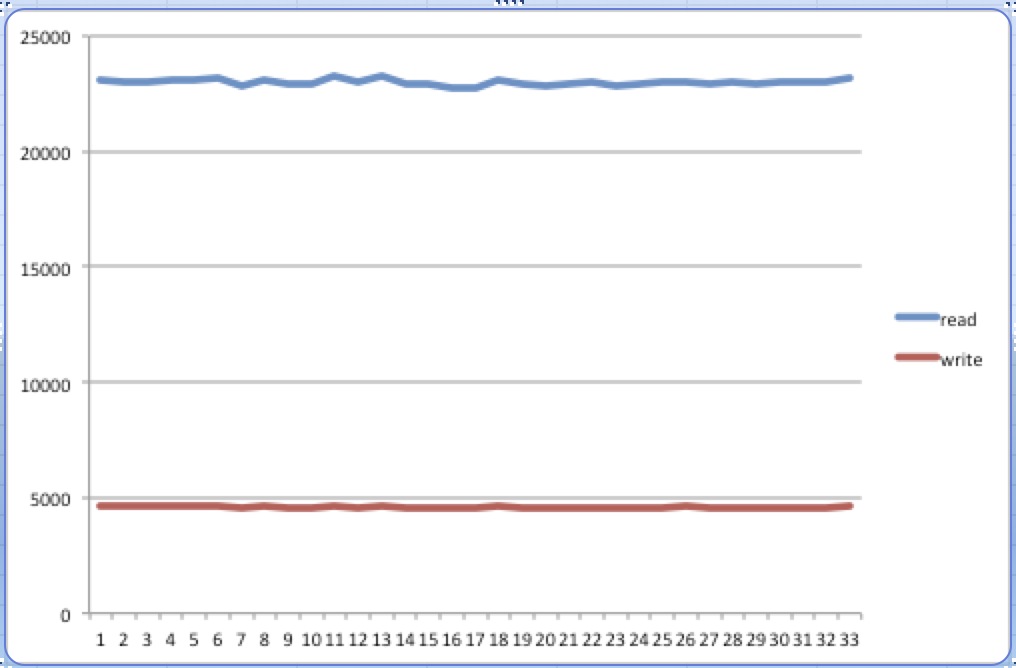
- 随机写
|
|
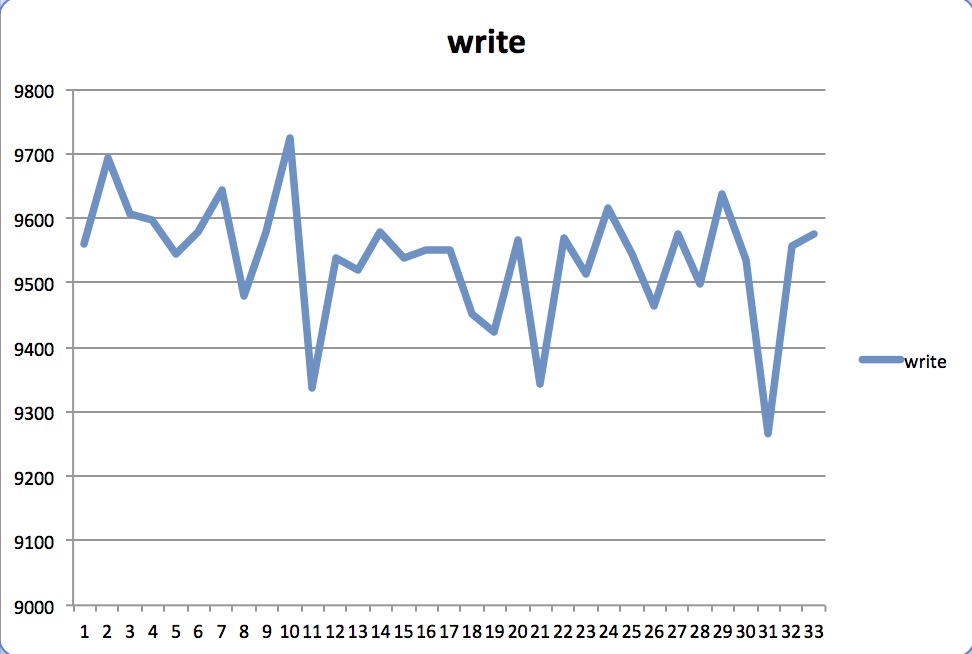
- 随机读
|
|
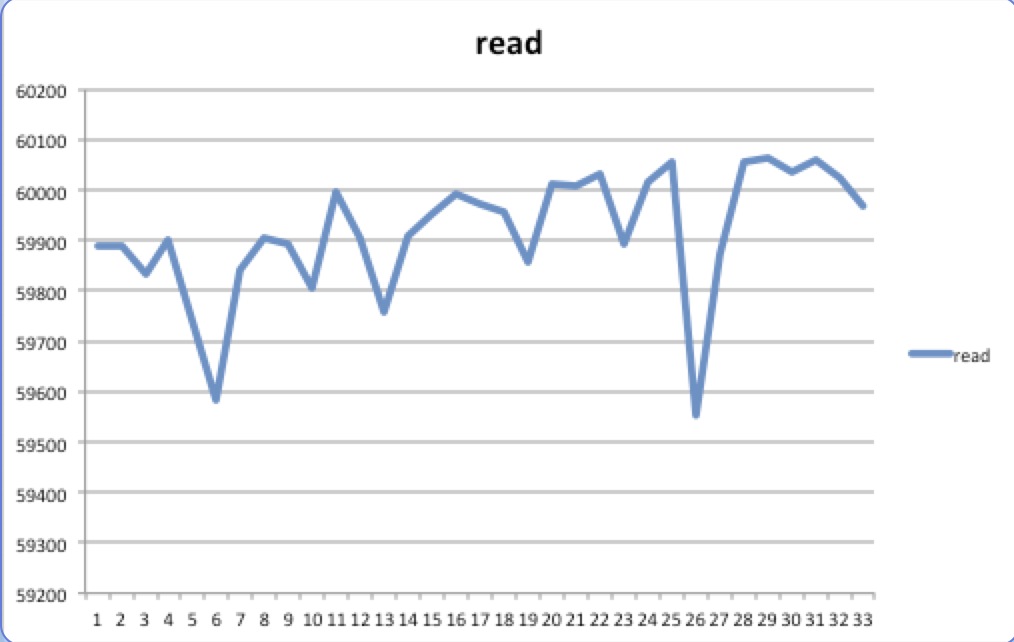
MySQL5.6 vs MySQL5.7 测试
磁盘:S3610 * 6 raid10, 内存128G
- Point select
|
|

- Point oltp
|
|
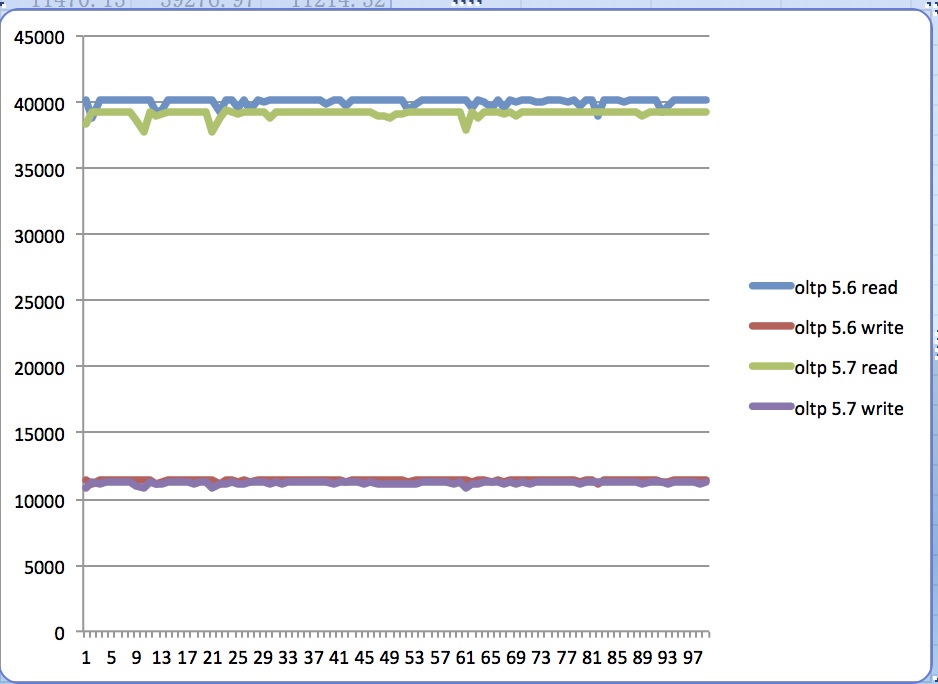
结论
- 在性能方面,虽然官方号称5.7性能比5.6快3倍,但是在实际测试中5.7比5.6却稍微差一点点
- 是否会选择5.7生产环境?当然,因为5.7的新特性太诱人了
参考:
https://www.percona.com/blog/2016/04/07/mysql-5-7-sysbench-oltp-read-results-really-faster/
http://dimitrik.free.fr/blog/archives/2013/09/mysql-performance-reaching-500k-qps-with-mysql-57.html
https://github.com/akopytov/sysbench
http://www.mysql.com/why-mysql/benchmarks/